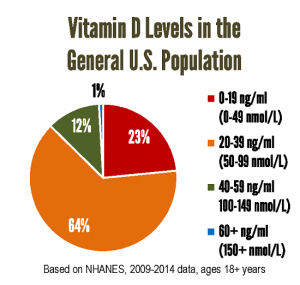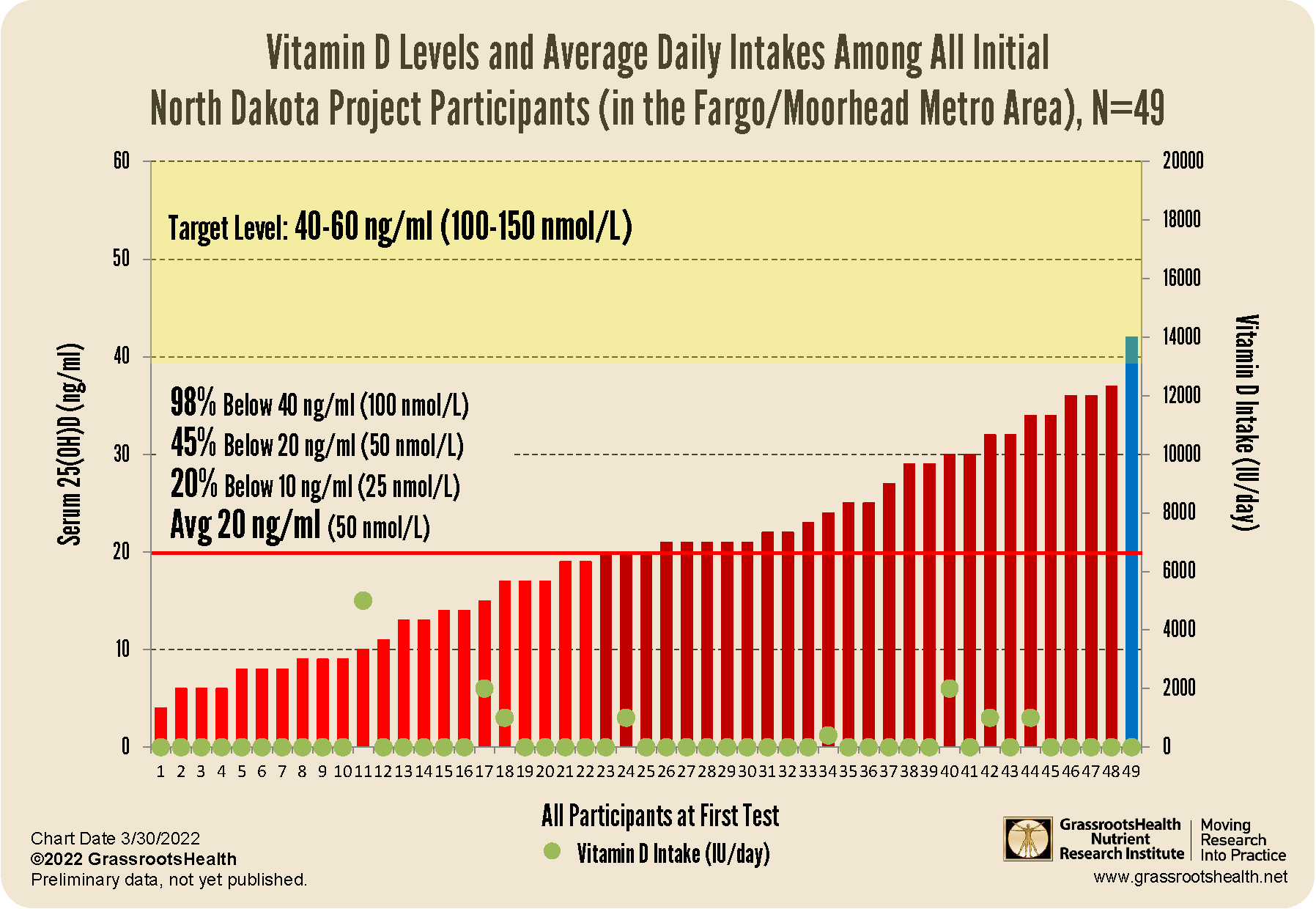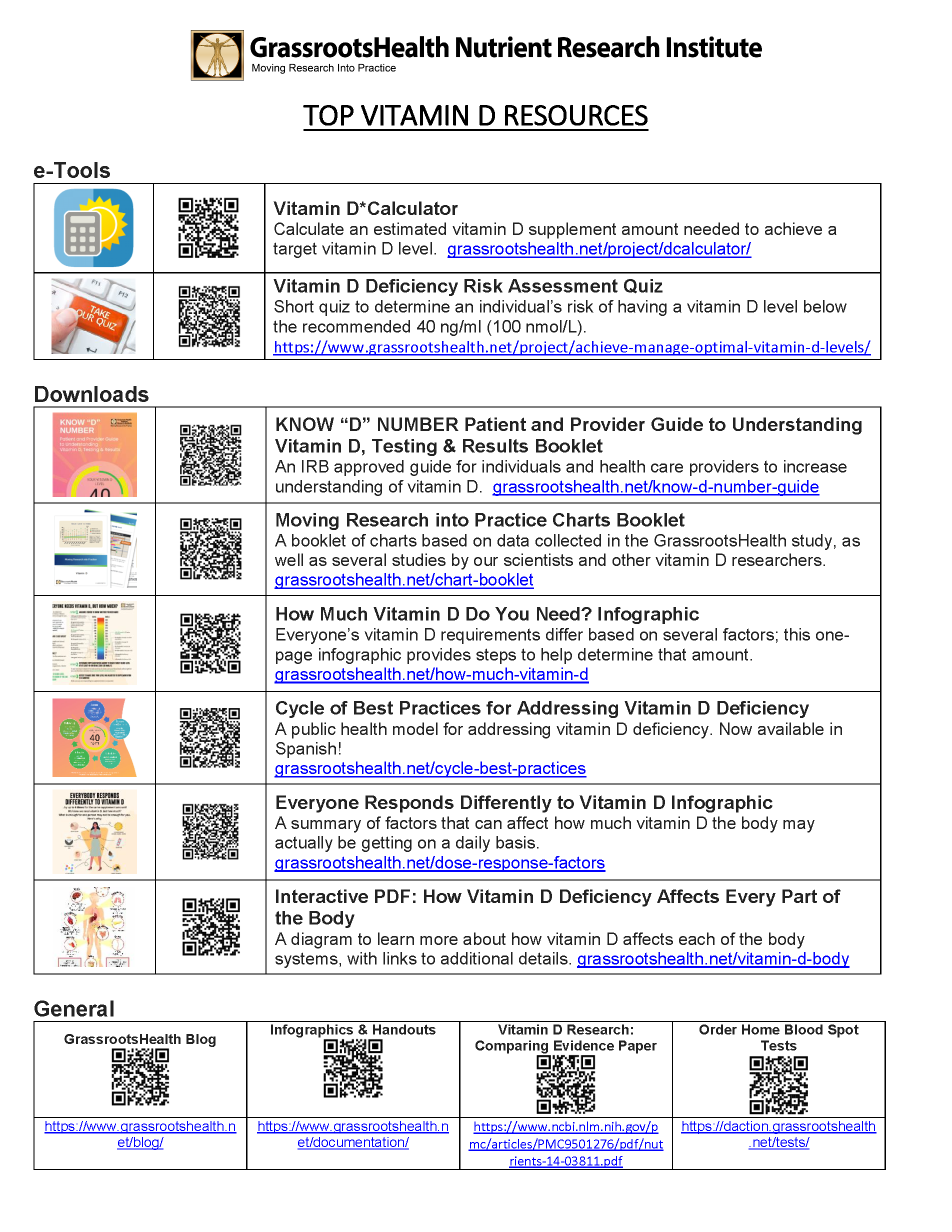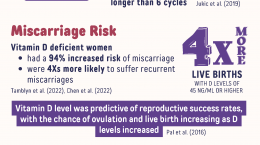Published on March 29, 2023
Some health care providers still don’t think vitamin D is important – thank those who know, and share this with those who don’t…
 National Doctors’ Day has been observed on March 30th each year in the United States since 1933. It is a day to recognize the contributions of doctors and thank those who help care for us and our health.
National Doctors’ Day has been observed on March 30th each year in the United States since 1933. It is a day to recognize the contributions of doctors and thank those who help care for us and our health.
GrassrootsHealth would like to offer special thanks to those doctors and health care providers who have taken the time to educate (or RE-educate) themselves on the importance of vitamin D. Our website lists hundreds of such practitioners on our Vitamin D*practitioners page – each of these practitioners took the time to view one or more of our vitamin D*education courses and pass a quiz to demonstrate their vitamin D knowledge. To learn more about the opportunities available to practitioners, including how to become a certified Vitamin D*Practitioner through GrassrootsHealth, click here.
Unfortunately, there are still doctors who don’t fully understand the latest research on vitamin D, are not confident in their knowledge of vitamin D, or who choose to ignore it completely. In today’s newsletter, we are sharing information that may help educate, or RE-educate, doctors and other health care practitioners on the latest vitamin D research and evidence-based practices that they can use to confidently incorporate vitamin D into their practice, patient care, and conversations.
Please share this with your doctor if you feel inspired to do so. Your actions can make a difference for many others!
Vitamin D Deficiency is Real, as is the Need for Testing
Vitamin D deficiency affects millions of people world-wide, and for the majority, unknowingly. The statistics fluctuate depending on location, season, and race/skin color, as well as the cut-off vitamin D level being used to define deficiency – which is a major issue to be addressed when educating health care practitioners.
 While the recommended vitamin D level, based on the National Academy of Sciences (formerly the IOM), is set to at least 20 ng/ml (50 nmol/L), vitamin D researchers agree that this level is far too low for overall health. The Scientists’ Panel of 48 international vitamin D researchers and scientists at GrassrootsHealth recommends at least 40 ng/ml (100 nmol/L), with a target range of 40-60 ng/ml (100-150 nmol/L) for overall health.
While the recommended vitamin D level, based on the National Academy of Sciences (formerly the IOM), is set to at least 20 ng/ml (50 nmol/L), vitamin D researchers agree that this level is far too low for overall health. The Scientists’ Panel of 48 international vitamin D researchers and scientists at GrassrootsHealth recommends at least 40 ng/ml (100 nmol/L), with a target range of 40-60 ng/ml (100-150 nmol/L) for overall health.
Regardless of which cut-off level one looks at, the vitamin D levels of adults in the United States are grim. The pie chart to the right shows the distribution of vitamin D levels among US adults, according to NHANES 2009-2014 data. Almost a quarter of the population is below 20 ng/ml, and nearly 90% are below the scientists’ recommendation of 40 ng/ml!
Participants in an analysis done in North Dakota fared even worse. Out of 49 participants, nearly half had vitamin D levels below 20 ng/ml, and 1 out of 5 were below 10 ng/ml!
Learn more about the current vitamin D recommendations and statistics here
Not Taking Vitamin D is More Risky than Taking Vitamin D
Some of the fear around vitamin D revolves around a previous misconception. Vitamin D supplementation during pregnancy was once mistakenly accused of causing Williams Syndrome, and although this has been disproven (it is now known to be a rare genetic disorder), several generations of doctors and health practitioners were taught of this association decades ago as part of their medical teaching, and they still fear vitamin D. While many published studies have since demonstrated the safety of vitamin D supplementation at doses of 4000 IU/day and above, including supplementation during pregnancy, there still remains hesitation to ‘un-learn’ or ‘re-learn’ and accept vitamin D as safe.
This outdated way of thinking about vitamin D often leads to neglect of addressing vitamin D concerns and a failure to incorporate current evidence-based vitamin D recommendations into practice. Unfortunately, vitamin D deficiency comes with many health risks, while the risk associated with taking vitamin D and maintaining optimal vitamin D levels are minimal to none. Toxicity from vitamin D is very rare, with most cases of vitamin D toxicity resulting from supplement manufacturing and labeling errors, as well as overdosing (seen in some cases with intakes of 50,000 IU/day or more over an extended period of time such as six months or longer), or over-correction of vitamin D deficiency (seen in cases with intakes of about 77,000 IU/day for two months).
Learn more about vitamin D toxicity here
Treating Vitamin D Deficiency Makes a Difference
One example: Pregnancy. An editorial by Cavoretto and Vigano published last year (July 2022) called to attention the need for routine vitamin D assessment and supplementation, especially in pregnancy. The authors also focused on the need for the proper design of vitamin D studies. This call to action stirred from the findings of Tamblyn et al., a study showing that women who were vitamin D deficient (with levels below 20 ng/ml or 50 nmol/L) at the beginning of pregnancy had a 94% significantly increased risk of miscarriage compared to women whose levels were 30 ng/ml (75 nmol/L) or higher.
“…there is no reason to accept deficiency of vitamin D when it is avoidable through simple and safe measures!”
While especially important for pregnancy, vitamin D is necessary for all systems of the body to function properly, and deficiency can lead to many health consequences. Share our top vitamin D resources and tools with your doctor, featured below.
Share these Learning Opportunities with Your Doctor
In our Vitamin D for Public Health Seminar, held at the University of California, San Diego, in December of 2014, a group of doctors, researchers, and public health educators presented on vitamin D and sunshine for health. The seminar was approved for continuing medical education units (CMEs) for doctors, nurses, and other health care providers, and was recorded for future viewing. These videos can be found under the “Seminar Videos” tab on our website’s Videos page and are excellent videos to share with your health care practitioners.
Watch and Share the Videos here
Also easy to share is our new online vitamin D*education course, Moving Vitamin D Research into Practice: Addressing Vitamin D Deficiency to Improve Patient Outcomes, Population Health & Reduce Costs (approved for 1.5 CNE/CPEU). The course was created to help end the vitamin D deficiency epidemic by educating others on the importance of vitamin D for health, the steps each person needs to take in order to achieve their target vitamin D level, and gain the basic knowledge needed to answer the most common questions you might be asked about vitamin D.
Learn More About this Vitamin D*education Course here
TOP Vitamin D Resources for Doctors, Health Care Providers, and Individuals
The following handout can easily be downloaded, printed, and shared with your doctor or other health care provider. It includes links to each of our top vitamin D resources, eTools, handouts and more – including our vitamin D*calculator, vitamin D risk assessment quiz, Disease Incidence Prevention charts, our patient and provider guide, brochures and more.
Download, Print & Share the Resource List Here
Are You Getting Enough Vitamin D?
The only way to know is to test your levels! Testing versus blind supplementation is essential to know for sure if what you are taking is the right amount for you. Once you test your vitamin D (and other levels) to know where you are NOW, you can account for any upcoming changes in lifestyle over the coming months and adjust your intake to reach (or maintain) your targets.
- Vitamin D
- Magnesium PLUS Elements
- Omega-3 Fatty Acids
- hsCRP
- HbA1c
- TSH
- Type 1 Diabetes Autoantibodies
Did you know that each of the above can be measured at home using a simple blood spot test? As part of our ongoing research project, you can order your home blood spot test kit to get your levels, followed by education and steps to take to help you reach your optimal target levels. Start by enrolling and ordering your kit to measure each of the above important markers, and make sure you are getting enough of each to support better mood and wellbeing!
Create your custom home test kit today. Take steps to improve the status of each of these measurements to benefit your overall health. With measurement you can then determine how much is needed and steps to achieve your goals. You can also track your own intakes, symptoms and results to see what works best for YOU.
Enroll in D*action and Test Your Levels Today!








